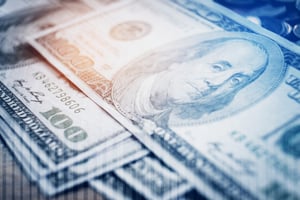The Corleones and Paycheck Protection Program
In The Godfather: Part III, Michael Corleone, the fictional head of the Corleone crime family, attempts to become a legitimate businessman and put all of his past misdeeds behind him. After being double-crossed, he famously said “Just when I thought I was out, they pull me back in!”

Classic. And apropos to the government’s Paycheck Protection Program.
As most of you know by now, the government offered low-interest rate loans through the SBA that have a loan forgiveness feature. You’ve also read that the program was so popular that it ran out of funding within two weeks and is set to begin with round two funding very soon.
While well-intentioned, the program was set up for abuse as little thought was put into the program with respect to vetting who really needs the loan aside from a certification that the business has been impacted by COVID-19. Well, who hasn’t?
We soon heard about the large public companies who qualified for and received significant funding from the PPP program (J. Alexanders, Shake Shack, Ruth’s Chris, etc.) while millions of truly small businesses were left out when funding was exhausted.
For those companies lucky enough to obtain a PPP loan, either in round one or round two—take note: Just when you thought you were set, they can change the rules.
As originally conceived, forgiveness was based on amounts paid for payroll, rent, utilities, etc. While the final rules were being hammered out, a provision was added that at least 75% of the money must be spent on payroll in order to receive forgiveness. This, of course, does not work for all companies.
In today’s Wall Street Journal, Senator Ron Johnson of Wisconsin is proposing further changes to the forgiveness calculation by tying it to revenues. Regardless of what the funds are used for, if your 2020 receipts are higher than 2019, there is no forgiveness. A sliding scale of maximum forgiveness is then introduced using 2020 receipts against 2019.
In an era where we’re now incensed that “big businesses” received these lifeline loans, don’t be surprised if this idea gains traction. It plays well in the media. What it doesn’t consider, however, is that higher gross receipts (which our attorney friends will analyze what that truly means) do not equate to fiscal health. Expenses have increased as a result of the pandemic, so profits may be gone. Margins may be reduced considerably, or bad debts may offset any gains under GAAP.
I appreciate the intent of the proposal, but congress needs to 1) take their time and consider the full impact of how any new bill is written and 2) actually consult with people that work with small businesses.
As Don Vito Corleone said ““I don't trust society to protect us, I have no intention of placing my fate in the hands of men whose only qualification is that they managed to con a block of people to vote for them.”
How prophetic.
Contact us if you have any questions.
Lloyd W.W. Bell III is Director of the Corporate Finance Group at Meaden & Moore. He has over 30 years of experience in financial management.









